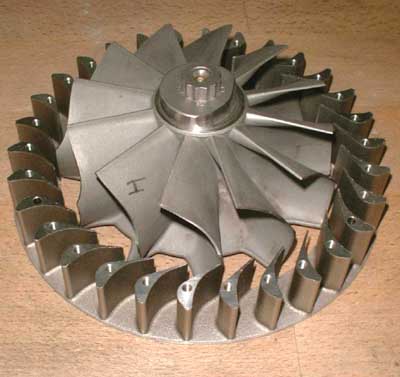If you really want to know, Yes. I do not use those terms rigorously because it depends on your point of view.
Drag is generally what opposes the work that you trying to do, and is caused by friction if the fluid or whatever parts in the machine and the dynamics of the fluid itself. Agree?
Now..
In a turbine the fluid is doing the work... Do you call it drag or thrust? That depends. But if you check it out it's all resolved in the same direction. So when I do my turbine calculations I am not so hung up about those two words, because they don't change the resulting force on the blades. It's just me.
I do not know why you say it is irrelevant, I think it is, because there is an obvious change of direction of the fluid over the crash structure. There is only ONE result of a momentum change. IMPULSE. I had to bring up the impulse turbine to let you realise that impulse is used to generate force and especially where fluid conditions are very turbulent. The first stage of a steam turbine is usually an impulse stage. The same for a turbo charger.
You can see the impulse stage, then the reactive stage. (ignore the guide vanes)

So yeah using impulse to generate downforce is actually good especially if you are dealing with a turbulent environment. That's why Monaco spec wings are so bucket shaped. Raw downforce from momentum change.
I do not know how much downforce a curved crash structure contributes. do you?
I don't care how many degrees you have.

If you checked your fluid dynamics book, I'm sure you will see what I am telling you in chapter 1 or chapter 2.





